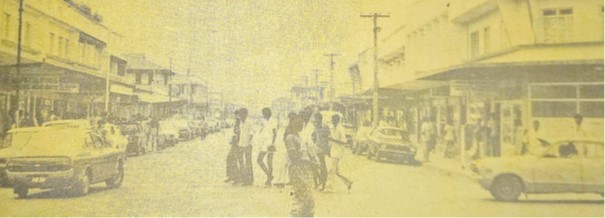An article in The Fiji Times on July 2, 1977, brought back the good old memories of Labasa Town in the early 1920s when it was still at the development stages.
The town was a village at that time, with earth road having deep side drains.
During the spring tide, you could fish in the middle of the commercial sites, which were surrounded by cane, rice, coconut, and cattle farms. At the present site of the Civic Centre were four bure occupied by James McComber’s family.
The site was covered with tiri patches and at high tide the area could be classed as lowland swamps.
There was no water supply, electricity, or telephone services.
People used wells and tank water. Kerosene, hurricane lamps and horses were the means of transport.
There were few stores scattered in the area, namely A.M. Broziak LTD, Jaganath Manhu Bros, Lalji Valabdass Kara Raniga, Adhin, Venkataya, Ramsi Subrail, Hendry Marks Ltd in Vulovi with the Post Office. All stores faced the C.S.R tramline, which was the main highway of those days.
If you must post a penny letter to Suva, you had to travel two miles to the Post Office, and it took five days to reach Viti Levu by sea mail.
At the same time, if you must see a police officer or district administrator or for telegram messages, you had to add another mile.
If you wanted to see the medical officer at the Government Hospital, you add another eight miles, whether by foot or horse.
There was no other means of transport. In the early days, the highway bridges, tramline, road and Malau Jetty were subsidised by the Government.
The CSR had their own agriculturist, market centre, sports, racecourse, butchery, dairy farm, stores, hospital, vegetable, gardens, and schools.
The main wholesale export and import store owned by Mr C D Eyre at Malau Jetty was the busiest coastal trader who exported produce by direct shipment.
And it was regretted that this port of entry did not progress after the 1929 hurricane, or the post-war development scheme laid by the Government.
At the early stage, the price of sugarcane was 15 shillings a ton. About 80,000 tonnes of sugarcane was produced annually in those days.
When Labasa Town was about to progress, the 1929 hurricane swept through the island and left most buildings roofless.
It was much bigger than the one which hit the island in 1911, and lasted over three days and caused heavy floods in the town.
However, major improvement to the town had taken place since 1963, when the sugar cane production rose to 365,000 tonnes and fetched $9.80 per ton, followed by 430,000 tonnes in 1964.
Even as the price later dropped to $7.20 per ton, it did not affect the growth of the town.



